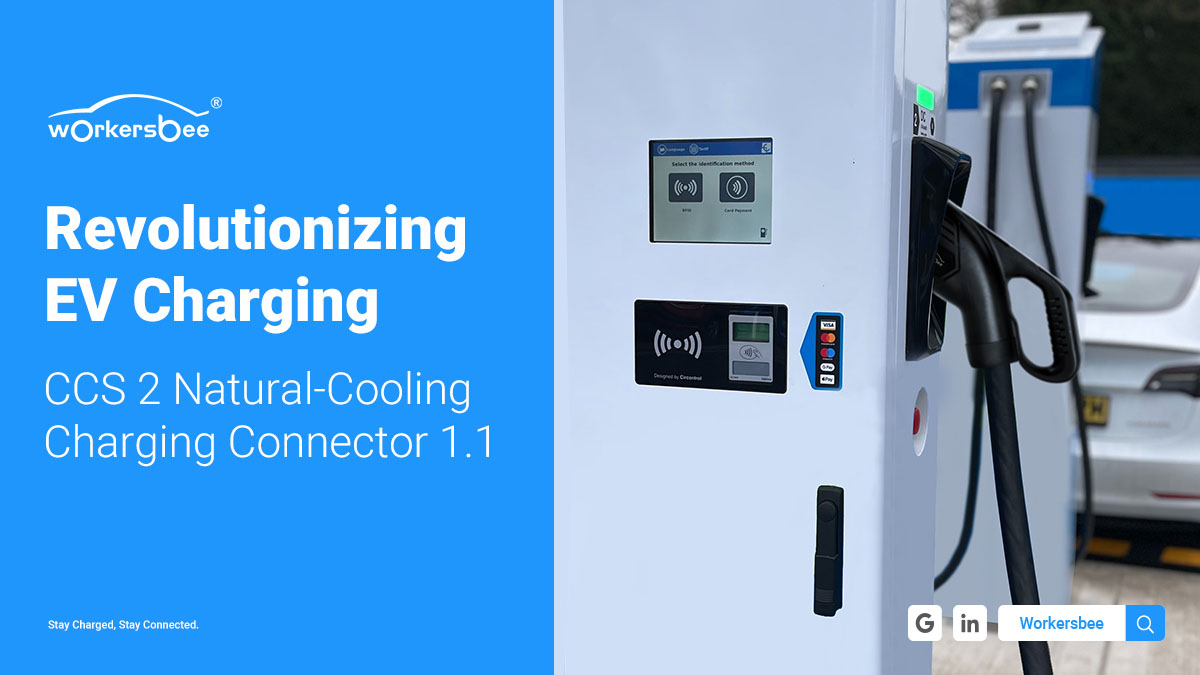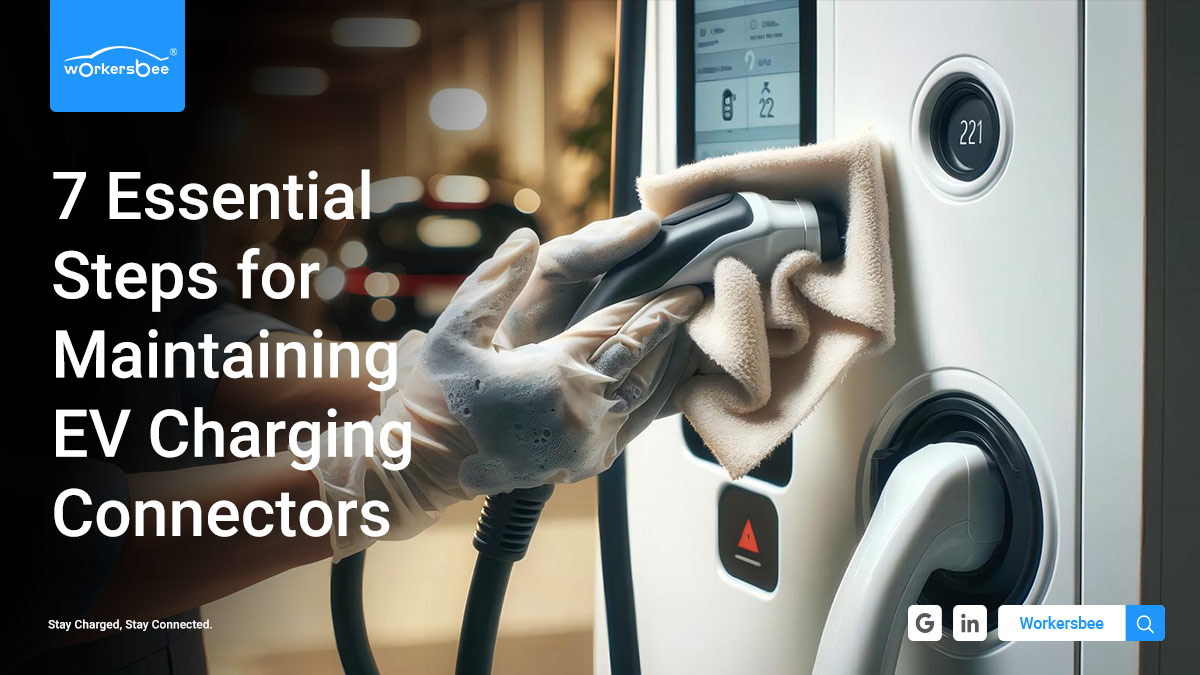 Revolutionizing EV Charging: Introducing CCS2 Connector for High-Power DC Charging
Revolutionizing EV Charging: Introducing CCS2 Connector for High-Power DC Charging
Jan 10, 2024
With the explosive growth in demand for electric vehicles, the need for EV charging infrastructure is also increasing rapidly. Especially for long-distance travel, there is a higher demand for DC high-power public chargers in highway corridors. Governments are making efforts to advance the construction of high-power charging stations,but the progress has been less than ideal due to the immense financial pressure, high initial costs, and various requirements for government incentives. The market needs a shot in the arm with high-performance and more cost-effective fast-charging product. Workersbee's natural-cooling CCS2 charging connector 1.1 is entering the market with full attention.
The CCS2 charging connector 1.1, is another exploration by the world-renowned charging solutions provider Workersbee in the EV charging revolution. Apply natural-cooling technology to support STABLE CONTINUOUS current output up to 375A, setting a new standard for natural-cooling performance in high-power DC charging. Apart from the improvement in charging efficiency, it has also made breakthroughs in technological innovation, once again leading the charging market in terms of reliability, safety, cost-effectiveness, and market applications.
The temperature rise generated by conductor resistance is a critical factor in the thermal losses of charging energy. To overcome this stubborn problem, product engineers use terminal ultrasonic welding technology to replace traditional riveting technology to reduce the resistance at the terminal connection, consequently lowering the temperature rise and ensuring that each component of the equipment works properly within the allowable temperature range.
With the support of natural-cooling technology, the charging connector can maintain a lower temperature rise range even during high-power charging, reducing the risk of overheating during charging sessions and allowing for a greater current to pass. What we can be confident about is that it can continuously charge at a high current of 375A. Through multi-sample laboratory testing, even if charged at a peak of 400A for about 60 minutes, the terminal temperature rise is still controlled within 50K in safety. The outstanding charging capability enables electric vehicles to gain more energy in a short time, providing EV owners with a more efficient charging experience. It also significantly enhances charging safety, ensuring the long-term stable operation of chargers.
Internally, the shell of the connector adopts the modular design makes it an efficiently producible standard component, further reducing component costs. The clever multiple-seal structure enhances the waterproof performance at the connector-cable junction, making it easy to achieve an IP55 protection level. It is not only waterproof and dustproof, but also moisture-proof, which is very reliable in humid environments in some areas.
It effectively prevents water vapor from penetrating the charging plug, avoiding potential short circuits and leakage accidents. Whether in harsh weather conditions with rain or snow or high-humidity environments, it offers a reliable protective barrier, ensuring that the charger remains in an efficient, stable, and safe working state.
Additionally, it boasts a series of powerful safety protection measures. The material selection for product manufacturing is also rigorous, requiring materials to possess high flame resistance, pressure resistance, wear resistance, impact resistance, and high oil resistance. Such excellence in R&D and production requirements prompts us to provide more reliable charging solutions for charging stations, while also extending the service life of charging connectors and cables, meeting user demands for high standards and high-quality products, and reducing maintenance costs.
Compared to AC charging stations, DC charging stations have higher charging efficiency and are more favored by car owners who need rapid recharge on highways. Compared to liquid-cooling systems, the CCS2 natural-cooling charging connector has a clear advantage in cost-effectiveness. Its high compatibility with natural-cooling charging stations reduces the complex and expensive building costs of liquid cooling systems, cable investment costs, and operational maintenance costs, making fast charging more economically feasible and contributing to the widespread adoption of CCS2 connectors and even electric vehicles.
Workersbee's CCS2 natural-cooling connector 1.1 has not only achieved significant technological breakthroughs but has also demonstrated strong competitiveness in the market. Through a forward-looking global market layout and headquarters establishment in Europe, the market trial deployment of new products has yielded exciting feedback. The charging connector is highly compatible and adaptable to DC charging stations in the European market, and easily be accessed. With TUV and CE certifications, its safety and reliability have received unanimous praise from internal test customers, and expressing strong expectations for further in-depth cooperation.
Workersbee's CCS2 natural-cooling connector 1.1 supports optional current configurations of 250A to 375A, easily achieving more economical DC fast charging through the seamless integration with natural-cooling technology. It effectively monitors the working temperature during the charging process and provides reasonable feedback, ensuring the long-term safe and stable working of the equipment. We look forward to establishing friendly and positive connections with all outstanding automakers, charger manufacturers, and charging station builders, collectively driving the electric vehicle charging industry into a more efficient, safe, and sustainable future.
Read More

 7 Essential Steps for Maintaining EV Charging Connectors: Ensuring Safety and Efficiency
7 Essential Steps for Maintaining EV Charging Connectors: Ensuring Safety and Efficiency
 Revolutionizing EV Charging: Introducing CCS2 Connector for High-Power DC Charging
Revolutionizing EV Charging: Introducing CCS2 Connector for High-Power DC Charging